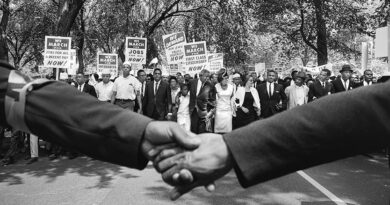“Boom” Where You’re Planted
Sonja D. Gracy,
author, playwright, and NYC public school teacher is currently working on her next book, God and the Girls.
African Americans; Black History Month; and the idea of persons sustaining, thriving, and excelling both racially and individually, are inextricably tied in the chronicle of our collective Black experience. As a people group with malevolent, “Middle Passage chattel, American beginnings, we exploded in ingenuity and a distinguishable hope, to become personified symbols of freedom. The triumphant history of America’s formerly enslaved ignites and codifies contexts that emblazon what it means to really be free. We are a people who literally “boomed” in our American “planting.”
My mother, Leesa P. Jones (the real writer in our family clan, I might add) is the serendipitously proud director and co-founder of the Washington Waterfront Underground Railroad Museum in Washington, NC, where she chronicles what she calls the “self-emancipating” feats of runaway slaves and their abolitionist supporters in her city’s National Park Service Underground Railroad Network to Freedom Site (NPS), which was designated in 2014.
I say serendipitous because Mom happily discovered this amazing, map-making piece of history inadvertently and only after the Burlington, New Jersey retiree returned to residency in her quaint “Original Washington” city she’d been enamored with as a child. It was Mom’s mix of love for our family, studying, writing, and her hometown that compelled her to volunteer to be the “historian” for our family reunions. But when mom’s intrepid venture vaulted her from affirmation of rich stories borne from a trunk-full of memorabilia harboring our family’s 18th century African, Cherokee Indian, and Scottish slave clan lineage to Underground Railroad links in her formerly Union-occupied hometown, Mom says that’s when “things got really exciting.”
“I’d grown up hearing different stories about the caves and homes in neighboring communities and towns like Aurora and Keysville and New Bern, NC that hid freedom seekers, along with lore about the Underground Railroad here in Washington,” Mom said, “but nobody really talked about Washington’s history.” And this is what made her hungry “to find out more facts.”
Mom’s self-directed fact-finding of the historic happenings in her hometown nestled on the Pamlico River estuary erupted into her establishment of local “Washington African- American History Walking Tours.” This venture led to the next and most pivotal, her assistance with the Phoenix Historical Society in Tarboro—which led to new boons of information about her town’s waterfront that led out into the Atlantic Ocean with self-emancipating slaves “stealing away” through her town’s Underground Railroad portals. It was the tons of primary source details in books, journals, and documents detailing accounts of Civil War soldiers that proved Washington was a bustling Underground Railroad route that helped enslaved people harbor ships to freedom.
What Mom thought would be just a work of posterity to bless her grandchildren and relatives boomed into something of seismically larger impact that has become world known. Visitors of the Washington (NC) Waterfront Railroad Museum she established in 2016 come from Georgia to Germany and from Kansas to Korea to soak in her city’s freedom-seeker history. “This Underground Railroad history has given a beautiful facet to history that has gone unpolished before,” says Mom, “and shows the brilliance of the creativity of a people determined to be free.”
The Washington Waterfront Underground Railroad Museum is the only Underground Railroad Museum in North Carolina solely dedicated to telling the story of America’s famous “Freedom Train.” The museum is located in an actual 1965 Seaboard Coast Line caboose filled with authentic artifacts and documents, which make it an excellent segue to talk about the Underground Railroad. Mom says she’s just happy to educate others about her hometown’s history. I say she made her dream a reality, by bountifully “booming” where she was planted—what a lesson! BOOM!
For more information about North Carolina’s “Washington Waterfront Underground Railroad Museum” visit https://whda.org/underground.


